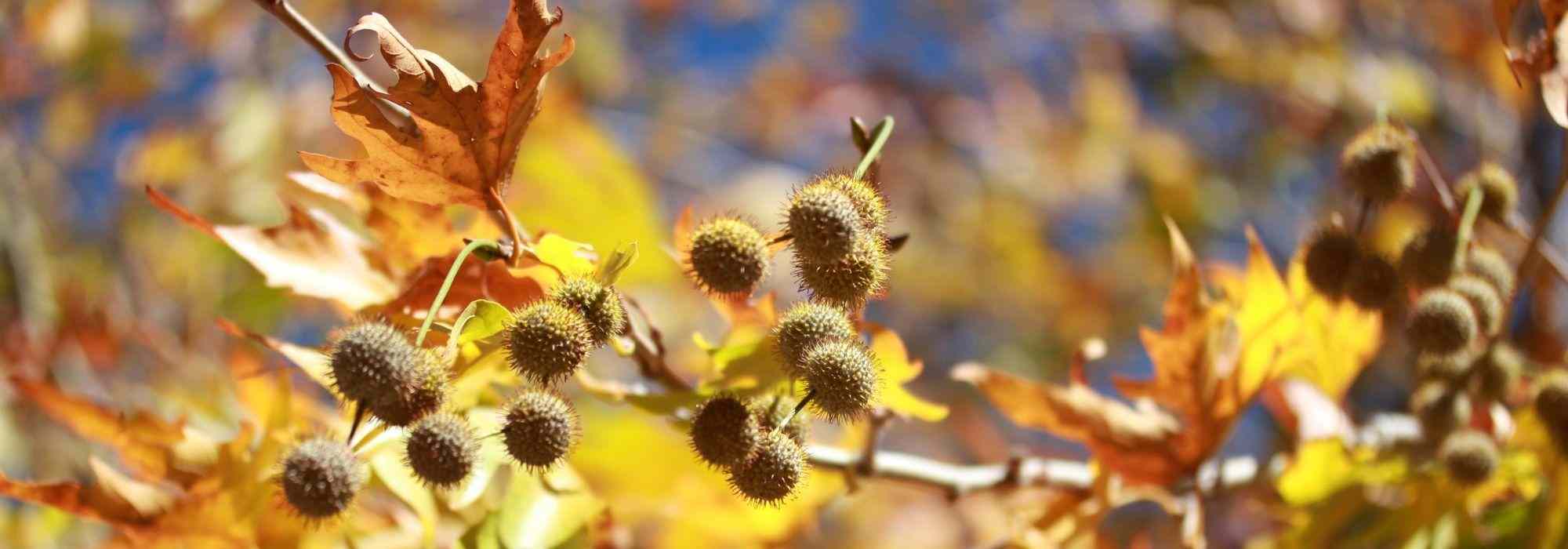
How to combat the plane tree tiger moth?
Damage caused, prevention, and natural treatments
Contents
Harmless to humans, but sometimes formidable for certain trees, the plane tree tiger is a small insect that feeds on plant matter (phytophagous).
As its name suggests, this parasitic insect uses plane trees as hosts, providing shelter and sustenance. It is responsible for aesthetic damage and nuisances. While its presence does not always mean the tree will be destroyed, an attack can weaken it and make it more vulnerable.
Let’s see how to identify the plane tree tiger and spot an attack, and then what natural treatments are available and the natural enemies to effectively get rid of these pesky little insects!
Recognising the plane tree tiger moth
What does the pest insect look like?
The plane tree lace bug (Corythucha ciliata), also known as the plane tree psyllid or reticulate bug, is a small piercing-sucking insect, similar to aphids, that hails from North America.
It was imported to Europe in the 1960s. In France, it was first spotted in the southeast. This pest is now well established in Europe and in many countries around the globe.
Adults measure only 3 millimetres. They are white with black spots, and their wings are membranous and transparent, resembling crossed threads (hence the name reticulate bug). It resembles its cousin, the oak lace bug.
The plane tree lace bug has 2 to 4 generations per year. After spending the winter under the bark of trees or sheltered in dead leaves, adult females lay up to 350 eggs along the veins on the undersides of tree leaves, around March-April.
The whitish larvae will then gradually disperse throughout the foliage.
The presence of the plane tree lace bug is particularly noticeable in spring and summer, as the insect thrives in warm, dry conditions.
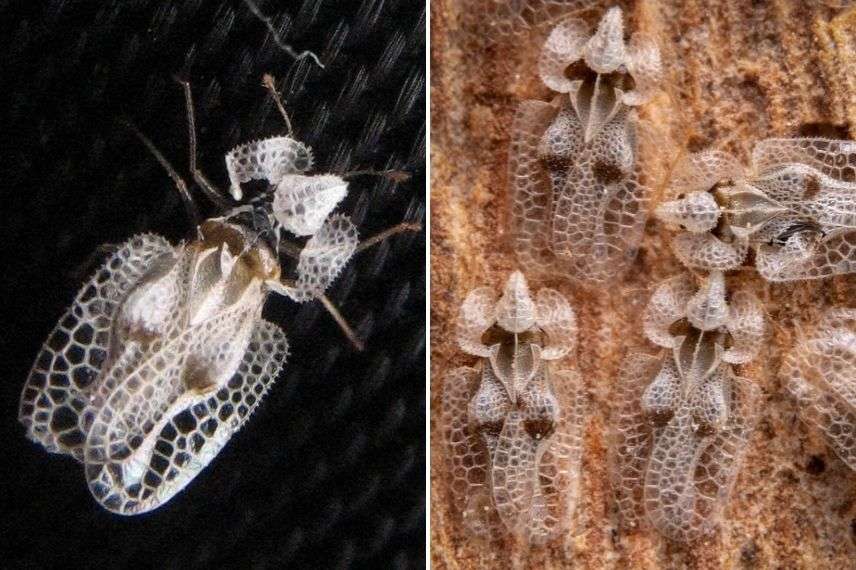
Corythucha ciliata (photo by Petra Broda – Wikipedia)
What damage does it cause?
Like many small pest insects that affect trees, such as the woolly apple aphid, the plane tree lace bug has an impressive reproductive capacity, allowing it to quickly colonise its host.
It only attacks plane trees, piercing the foliage to feed. The pest is easily observable on the undersides of leaves, near the veins.
Visible symptoms on the affected tree include:
- depigmentation and discolouration of the leaves, which turn yellow
- the leaves may eventually completely dry out and fall prematurely
- overproduction of honeydew
- overall appearance of the tree declining
The consequences of an attack include defoliation of the tree, a reduction in photosynthesis affecting growth, and overall weakening. The plane tree becomes more susceptible to climatic factors and diseases. In extreme cases, a severe repeated attack can lead to the death of the tree.
Although not confirmed, the pest is also thought to be a vector for pathogenous fungi, such as the canker of plane trees or anthracnose.
In addition to this damage, there are nuisances in the infested environment: numerous adult flights, which sometimes do not hesitate to enter homes, as well as honeydew falling onto public pathways, urban or garden furniture, vehicles, etc. The plane tree lace bug can also cause bites, but does not pose a danger to humans: no allergy risk has been proven so far.
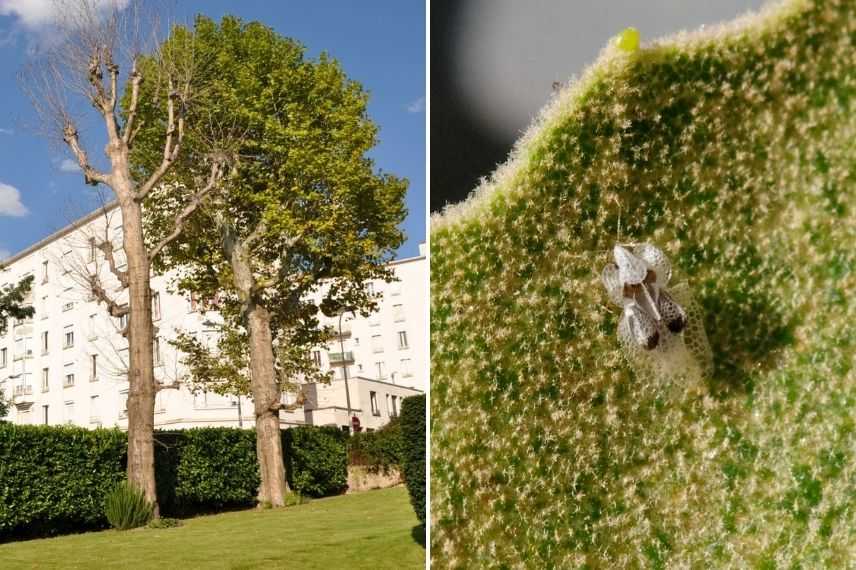
Diseased plane trees (photo by Roouul – Wikimedia) and leaves turning yellow (photo by MycoPiaf – Flickr)
Preventing the appearance and proliferation of the plane tree tiger moth
To prevent the installation of the plane tree bug, cities are increasingly diversifying the species planted, which also helps to stop the uniformity of landscapes.
These alignment trees had indeed been extensively cultivated across France to line the roads. Until the 1980s, they were renowned for their many qualities: tolerance to pollution and urban environments, tolerance to pruning, and… low sensitivity to pests and diseases.
The practice of so-called gentle or reasoned pruning is also becoming more widespread. Less invasive, it supports the tree rather than constraining it, thus avoiding weakening it and increasing its sensitivity to pests and pathogens.
As a preventive measure, growing melliferous plants, which will attract beneficial insects and natural predators of pests (lacewings, wasps, etc.) is also a solution. Consider borage, nasturtium, fennel, or lavender.
Flowering hedges, fallow lands, or areas of fallow are just as beautiful as they are beneficial to wildlife.
Maintaining a good natural balance helps attract biodiversity. Prohibiting chemical treatments and installing some equipment in the garden, such as insect hotels, helps to sustain the natural presence of beneficials (insects, birds, arachnids, etc.).
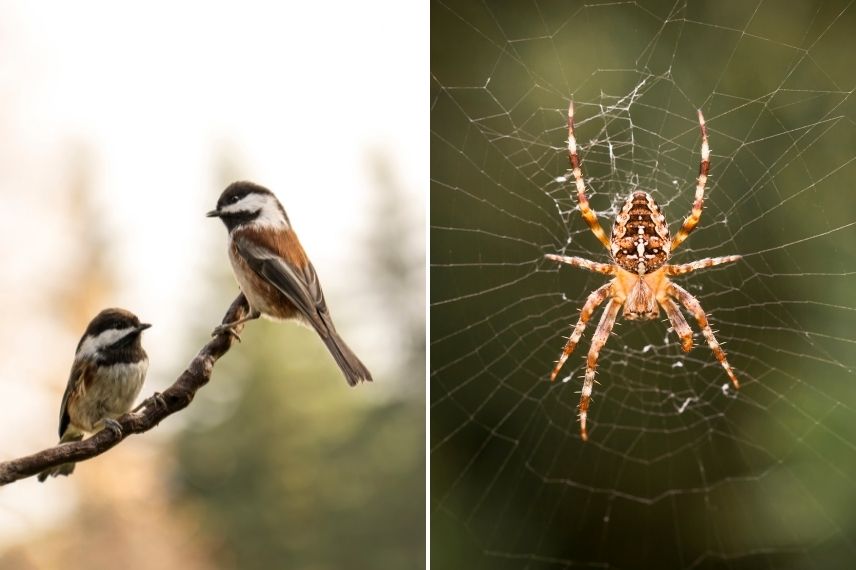
Get rid of the plane tree tiger moth naturally
As always, we prioritise natural treatments to combat pests.
Chemical products and insecticides are indeed costly, often ineffective in the long term, non-selective, and, above all, dangerous and polluting for both humans and biodiversity as well as the environment.
Biological Control
The biological control allows for the ecological combat of unwanted pests by using beneficial organisms.
Against the plane tree psyllid, it is possible to directly purchase nematodes, which should be sprayed at the end of winter or in spring on the affected tree. These small round worms, naturally present in the soil, parasitise the pests by entering their bodies. They cause the death of the plane tree psyllids in just a few days.
You can also obtain lacewings, this green insect with translucent wings and long antennae, whose larvae are significant consumers of the pest. They will be released in summer directly onto the foliage of the infested trees.
Mechanical Solutions
Before winter, remove any loose pieces of bark that may serve as shelters for the plane tree psyllids, using a metal brush. Clear away any plant debris (dead leaves, twigs, etc.) present at the base of the tree as they also provide a cosy nest for unwanted pests.
In the case of a confirmed infestation, it is possible to use vegetable oil, applied to the entire trunk of the plane trees at the end of autumn. This oil will suffocate the overwintering plane tree psyllids.
It should be noted that, like many treatments, even natural ones, this solution is not selective.
- Subscribe!
- Contents
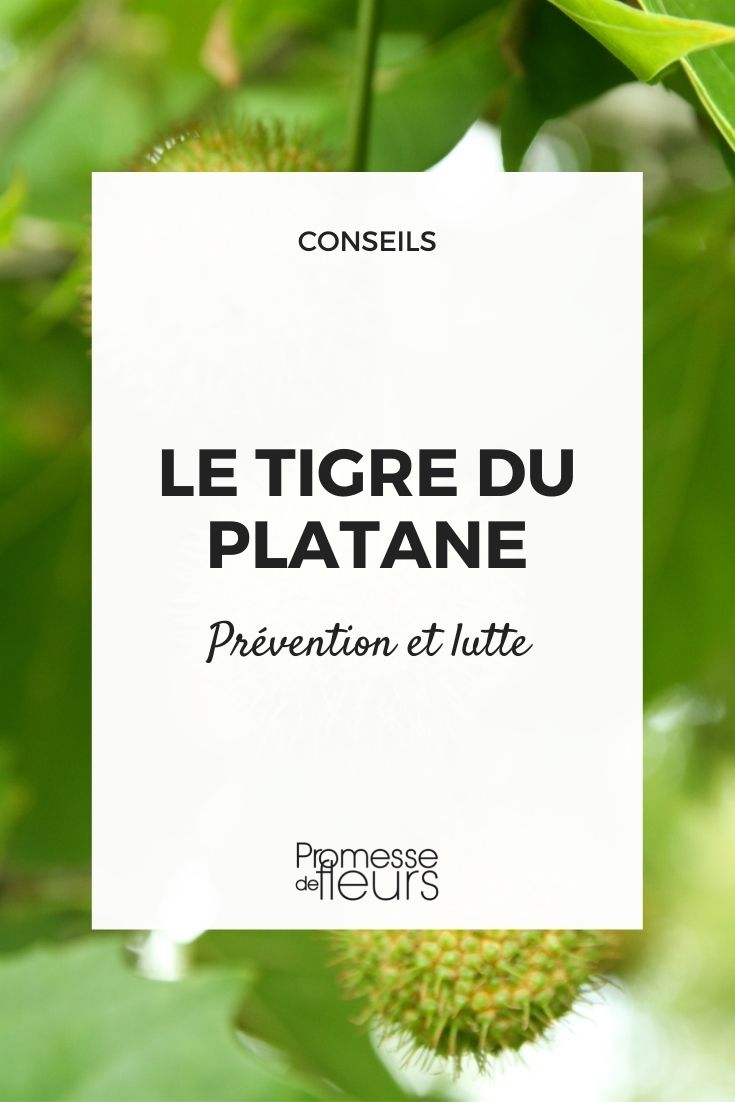































Comments